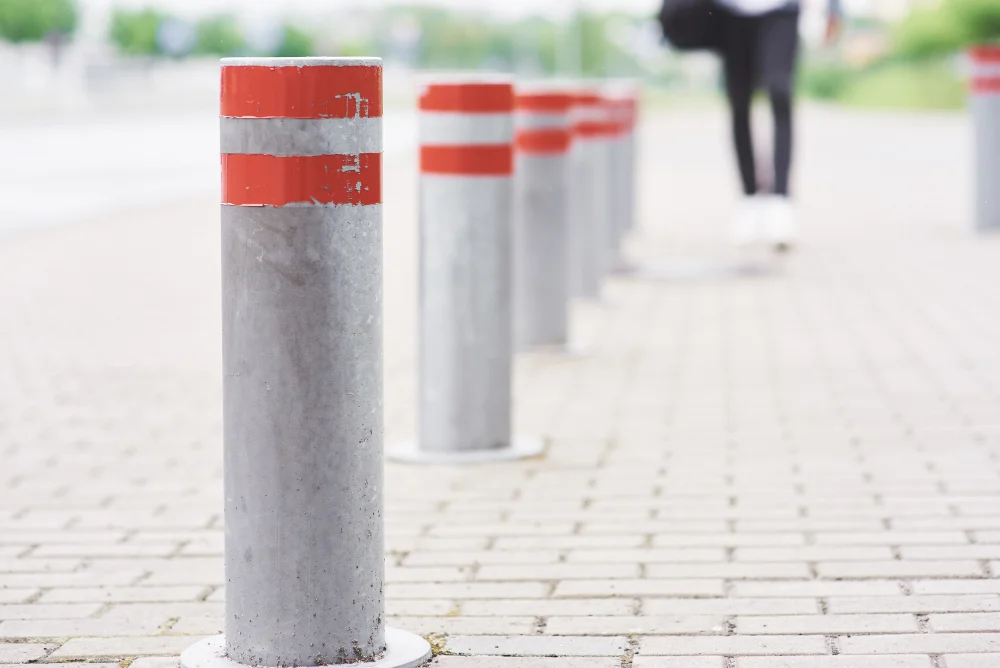When it comes to ensuring the safety and security of pedestrians, buildings, and public spaces, steel bollards are an essential component. But how do you balance the cost and effectiveness of these protective barriers? In this comprehensive guide, we will explore the various types of steel bollards, their uses, and the factors to consider when choosing the right bollard for your needs. By understanding the key aspects of steel bollards, you can make an informed decision and invest in a solution that provides the best value for your money.
What are Steel Bollards?
Steel bollards are short, sturdy vertical posts made of steel that are used to control and direct traffic, protect pedestrians and property, and serve as a visual deterrent to unauthorized access. They can be found in a variety of settings, including parking lots, sidewalks, public parks, and commercial areas. Steel bollards are preferred for their durability, strength, and resistance to corrosion, making them an effective and long-lasting solution for various applications.
Types of Steel Bollards
There are several types of steel bollards available, each with its unique features and benefits. Some of the most common types include:
– Stainless Steel Bollards: These bollards are made from high-quality stainless steel, which is resistant to corrosion and staining. They are ideal for use in coastal areas or locations with harsh weather conditions.
– Security Bollards: Designed specifically for high-security applications, these bollards are reinforced with additional materials, such as concrete or steel plates, to provide maximum protection against vehicle impacts.
– Removable Bollards: As the name suggests, these bollards can be easily removed and reinstalled as needed, making them a flexible option for areas with changing access requirements.
– Decorative Bollards: These bollards feature attractive designs and finishes, making them an aesthetically pleasing option for areas where appearance is a priority.
Factors Affecting Bollard Cost and Effectiveness
When evaluating the cost and effectiveness of steel bollards, there are several factors to consider:
– Bollard Materials: The type of steel used in the bollard’s construction will impact its durability, strength, and resistance to corrosion. Stainless steel bollards, for example, may be more expensive but offer superior performance in harsh environments.
– Bollard Design: The design of the bollard, including its size, shape, and reinforcement, will influence its effectiveness in protecting against vehicle impacts and other potential threats.
– Bollard Installation: The complexity of the installation process and the need for additional materials or labor can affect the overall cost of the project.
– Maintenance Requirements: Regular maintenance, such as cleaning, repainting, or repairing damaged bollards, can add to the total cost of ownership over time.
Choosing the Right Bollard for Your Needs
To determine the most suitable steel bollard for your specific needs, consider the following factors:
– Purpose: Identify the primary purpose of the bollard, whether it’s for traffic control, pedestrian safety, property protection, or aesthetic appeal.
– Location: Consider the environmental conditions and potential threats in the area where the bollard will be installed, such as weather, vehicle traffic, or vandalism.
– Budget: Determine your available budget for the project, taking into account both the initial cost of the bollard and any ongoing maintenance expenses.
– Aesthetics: If appearance is a priority, explore decorative bollard options that complement the surrounding architecture and landscape.
Bollard Installation and Maintenance
Proper installation and maintenance are crucial to ensuring the effectiveness and longevity of your steel bollards. Some tips for successful bollard installation and maintenance include:
– Hire a professional: Engage a qualified contractor with experience in bollard installation to ensure the job is done correctly and safely.
– Follow manufacturer guidelines: Adhere to the manufacturer’s recommendations for installation procedures and materials, as well as any local building codes or regulations.
– Inspect regularly: Perform routine inspections of your bollards to identify any signs of damage, corrosion, or wear that may require repair or replacement.
– Maintain appearance: Keep your bollards clean and well-maintained to preserve their appearance and functionality. This may involve regular cleaning, repainting, or refinishing, depending on the bollard material and finish.
Conclusion
In conclusion, steel bollards are a vital component in ensuring the safety and security of pedestrians, buildings, and public spaces. By understanding the various types of steel bollards, their uses, and the factors that influence their cost and effectiveness, you can make an informed decision and invest in a solution that provides the best value for your money. Remember to consider the purpose, location, budget, and aesthetics when choosing the right bollard for your needs, and prioritize proper installation and maintenance to ensure the long-term success of your investment.
